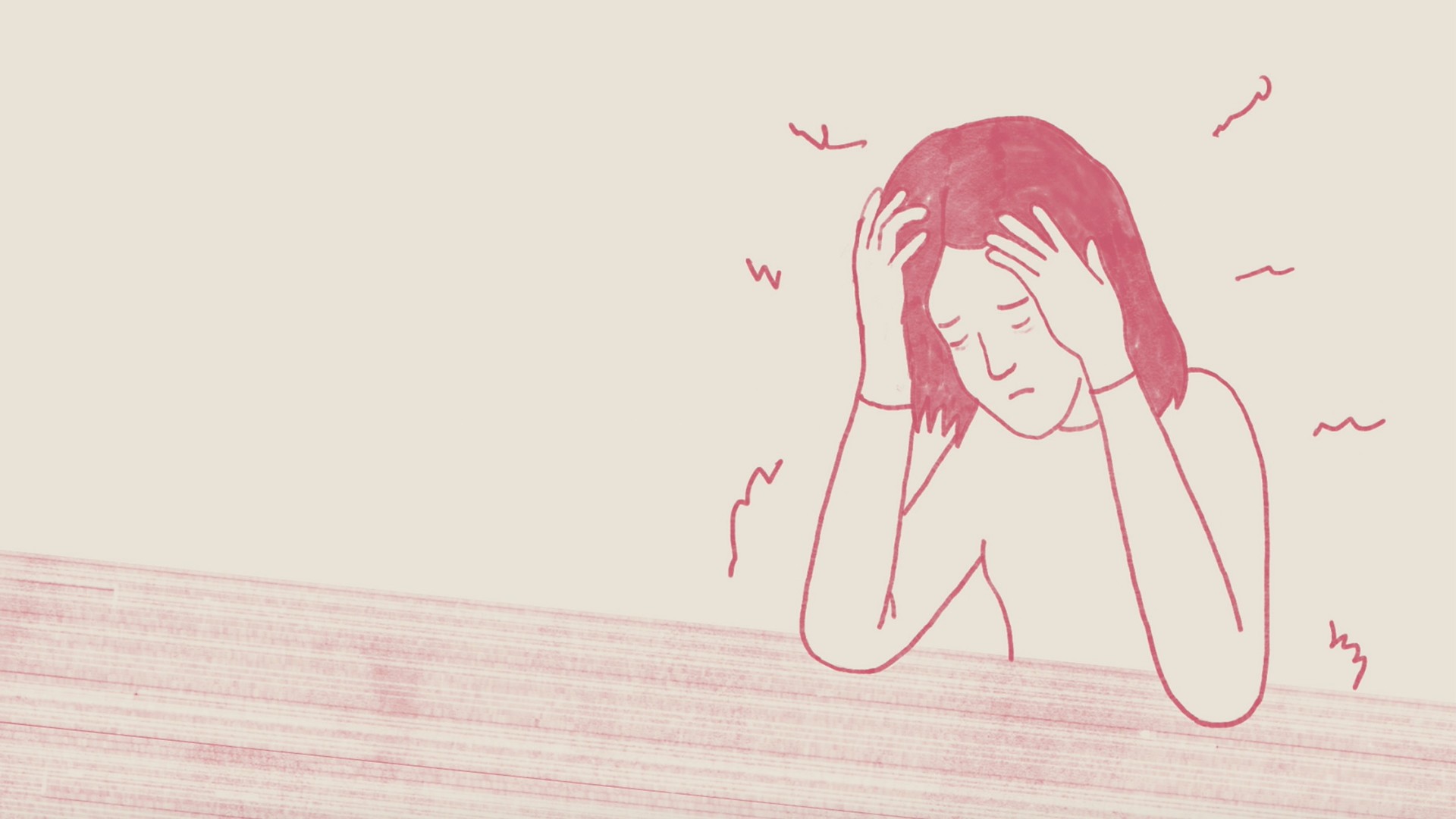Bruno Aguierre/Unsplash
In the early 90s, a team of pioneering researchers set out to understand how many people in the US experienced psychological disorders. The first National Comorbidity Survey, led by the Institute for Social Research at the University of Michigan, Ann Arbor, interviewed more than 8,000 Americans ages 14 to 54. The survey, released in 1994, created a starting point for understanding America’s mental health landscape.Half of respondents showed at least one disorder across their lifetimes, and almost a third within the previous year. The report broke down conditions by age, race, and gender, with gender showing marked differences: Men had greater rates of substance abuse and antisocial personality disorder; women greater rates of mood and anxiety disorders.That finding about gender and anxiety—specifically that 30.5 percent of American women develop an anxiety disorder over their lifetime, compared to 19.2 percent of men—was not a surprise. Previous, less comprehensive studies had also found a lopsided allotment of anxiety along gender lines, and this finding has been replicated in subsequent studies of Western populations, including the 2005 National Comorbidity Survey. Most recently, in 2016, researchers at the University of Cambridge conducted a systematic review of studies on the proportion of people with anxiety disorders and found that women are almost twice as likely to be afflicted as men. (Most of these studies track only binary gender.)The finding is consistent, even as psychologists become increasingly doubtful that there are many innate, meaningful differences between male and female brains. A 2005 analysis from researchers at the University of Wisconsin, Madison of 46 meta-analyses—meaning a summary of almost all the recent data—found that men and women are mostly alike in terms of the basic characteristics of personality, cognitive ability, and leadership skill.So the question remains: Why do women, apparently, develop anxiety disorders more often? And what does it say about gender norms and their effect on negative thought patterns? “I don’t think anyone would say it’s purely biological,” says Pauline Maki, a professor of psychiatry and psychology at the University of Illinois at Chicago, and director of UIC’s Center for Research on Women and Gender. “I think it’s rare to think of it as purely social, as well.” There is “yin and yang to it” where societal factors interplay with hormonal differences.There is no doubt that the medical establishment has long been more demeaning to the psychological conditions of women than of men. Ancient Greek physicians and philosophers attributed nearly all of women’s medical and social problems with poisoning “humors” in the uterus, an organ of mystery to them.Symptoms that could be diagnosed as anxiety and mental illness were deemed signs of possession and witchcraft for centuries, and often were dealt with via a death sentence. During the trials of Salem, Massachusetts, symptoms like staring, raucous noises, uncontrolled jumps, and sudden movements sent women to the gallows. Sigmund Freud viewed anxiety and compulsive behavior in women as a symptom of their innate inability to be satisfied sexually.The finding that women experience anxiety disorders more often than men is consistent among more modern and scientifically rigorous researchers, but given the history of pseudoscience aimed at women and their states of “hysteria,” interpreting it comes with certain pitfalls. “I think it is implied and generally stereotyped that women are more fragile,” says Kim Hollingdale, a licensed marriage and family therapist in Los Angeles. “‘Hysteria’ was a term that was applied to women. Thankfully, that’s no longer a diagnosis. But even now, women are more likely to be described as having ‘bigger’ emotions. Women show emotions in anxious ways, even if the stressors for each gender are the same.”Estrogen, the key female sex hormone, plays a role in regulating anxiety. Changes in circulating levels of estrogen across a woman’s reproductive lifespan are associated with spikes of anxiety. The risk of developing an anxiety disorder increases at puberty, when the estrogen-based steroid estradiol floods girls’ bodies. There is also an increase in anxiety symptoms after menopause (whether it’s brought on by natural aging or a medical condition). Also, at the end of the monthly menstrual cycle, women with anxiety disorders sometimes experience even greater levels of anxiety.Some of these effects may be caused by estrogen receptor sites, Maki says. In a 2005 study, female lab rats who were flooded with estrogen receptor genes and made to run through a maze showed more anxious behavior—like head dips and pooping—than those who were not. “These were rats,” Maki says, “so there were no social factors to consider.” Another rat study found that injections of testosterone, the main male sex hormone, made the subjects less anxious.
More from Tonic:
There are some smaller hormonal differences between genders that could act as catalysts for anxious behavior. There is evidence that estrogen and progesterone can modulate neurotransmission in a way that would enable obsessive-compulsive thoughts. Also, in men, the neurons that process stress and comfort-related hormones secrete a protein that nixes the anxiety-inducing effect of the stress-related hormone corticotropin. Mysteriously, women’s brains do not, although these neurological systems are anatomically similar.Shifts in the hormone interplay could create a disruption of mood and calmness more frequently in women, but this alone isn't enough to explain the full disparity, Maki says.The finding that consistently shows up in research is not just that women experience the emotion of anxiety more frequently, but that they have a greater chance of developing an anxiety disorder, a pattern of thoughts and behavior. While hormonal reasons may predispose women to experiencing anxiety, the disorders may more be the result of the pressure put on them—particularly at times of hormonal change.Maki points to menopause: “For non-disadvantaged women, it’s when they peak in terms of career, and they also have to deal with aging and loss of fertility,” she says. These are major social losses for women—like conventional beauty and childbearing ability. Society puts comparatively little social value on attributes gained as woman age, such as experience and wisdom. At the same life point, Maki says, women take on their greatest load as caretakers, a role disproportionately assigned to women in families. They have children of different ages and elderly parents that may need more attention.In other words, Maki says, you have the perfect storm: More is demanded at work and at home, and a woman is losing some of her most socially valued attributes—like youth and fertility—and the anxiety-regulating estrogen system is in flux. Similarly, pubescent girls are more prone to developing anxiety disorders than older girls or their male peers: Their estrogen system is changing. They also have to deal with body image issues, more complex peer relationships, greater academic expectations, and their start in the terrain of dating and sexuality—one that is problematic in countless ways for young women. It’s another time period where conditions are just right to develop an anxiety disorder.Rather than trying to determine why girls and women are prone to anxiety disorders, another approach is to inquire why boys and men are more disposed to other diagnoses.Men and boys are discouraged against direct expressions of distress, says Deborah Cohan, a professor of sociology specializing in gender at the University of South Carolina-Beaufort. Boys are told via cultural tropes that anger is more acceptable than vulnerability and worry. She says the same underlying emotions get channelled differently depending on gender. “We are left with the cultural phenomenon of anxiety and rage that gets channeled as inward, hidden protests for women and as outward and stylized expressions of rageful dominance for men.”Katie Davis, a licensed clinical psychologist at Park Avenue Pediatric Neuropsychology in New York City, who works mostly with teenagers, says she sees such dynamics play out among her clients. “There has been a big effort to expand the behaviors that are okay for girls,” Davis says. “There are classes for girls who code, girls who run—all the groups that expand what girls can do.” But “there’s no ‘boys who ballet,’ no push to expand what boys can do.”This holds true for Manhattan, the liberal bubble of privilege from which Davis draws most of her clients. “I have a big sample that is left-leaning,” she says. “I still see a gender gap [in willingness to express emotion]. It’s not okay for boys to express emotion. [Holding in emotions] creates aggression. It leads to school violence.” Deep, negative emotion tends to be funneled into more stereotypically "manly" neuroses.Societal pressure and misunderstanding can have real psychological impact, Hollingdale says. She says it’s apt to apply the idea of generational trauma to women. Historically, women have had a lot of reasons to be anxious: Sexual violence, fewer career and educational opportunities, an earning power that is nonexistent or so much less than a man’s that they’re left dependent on the opposite sex. Maybe some of this is passed down from mother to daughter.“We find that the descendants of Holocaust survivors have some of the same psychological makeup,” Hollingdale says. “Intergenerational trauma might add to our stress levels. I could see how that would work.”Over time, more researchers have come to see the minds of men and women as lacking in innate differences. This year, Lise Eliot, a professor of neuroscience at the Chicago Medical School and author of Pink Brain, Blue Brain, stood on stage at the Aspen Ideas Festival and declared, “People say men are from Mars and women are from Venus, but the brain is a unisex organ.”But the brain is still being charted by scientists, and findings—like the role of sex hormones on mood and anatomical differences in brains by gender—have prevented researchers from reaching a full consensus on the issue. Most researchers account for the deeply felt impact of socialization on psychological makeup. Cohan says that when she teaches undergrad classes on gender and psychology, she assigns students icebreakers to get them talking about how the issue has impacted their lives.“Women will disclose on the first day: ‘I suffer from panic attacks,” she says. “Men don’t [often] disclose.” Women will also talk about body image and sexual assault, while their male classmates stay silent, she says. She knows that students who take her class are a small, preselected sample, but she’s watched this process with intense interest. Do issues of gender and society affect men less consciously? Probably, she thinks.But also, “Women have more permission to show those emotions,” Cohan says, and those emotions often come out as anxiety. Men’s “emotions are invalidated since boyhood,” Cohan says. “They are often told to suck up and bear it. This often comes out as violence against other boys. So you have the same human emotions, and they do get gendered.”Sign up for our newsletter to get the best of Tonic delivered to your inbox.
Advertisement
Advertisement
First of all, there’s a history of pseudoscience at play
Advertisement
Hormones play a key role in creating anxiety
More from Tonic:

There are some smaller hormonal differences between genders that could act as catalysts for anxious behavior. There is evidence that estrogen and progesterone can modulate neurotransmission in a way that would enable obsessive-compulsive thoughts. Also, in men, the neurons that process stress and comfort-related hormones secrete a protein that nixes the anxiety-inducing effect of the stress-related hormone corticotropin. Mysteriously, women’s brains do not, although these neurological systems are anatomically similar.
Advertisement
Advertisement
Certain emotional expressions are more permissible depending on your gender
Advertisement
